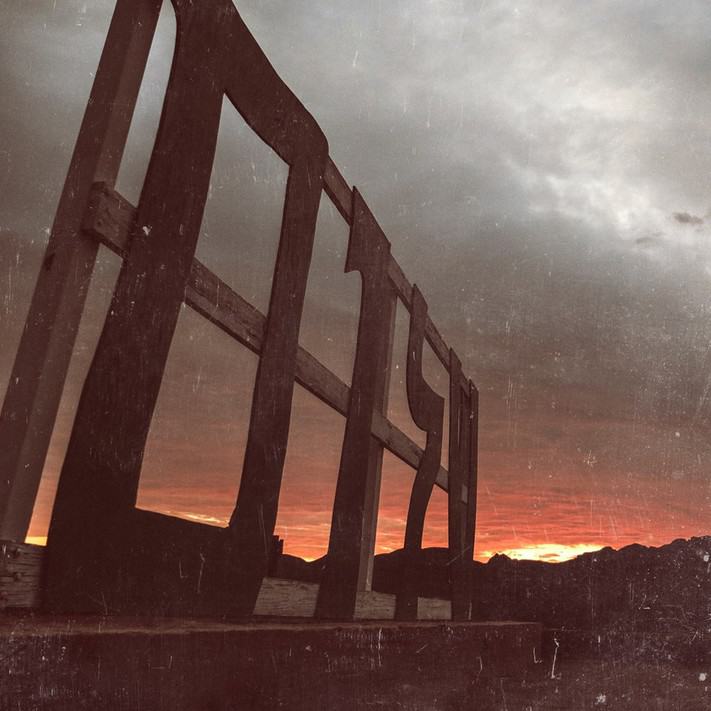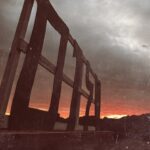by Henry Schmidt, Shalom Institute
Parshat Devarim
The Torah may be our past, but Devarim, the shared name both for this week’s Torah portion and for the fifth book of the Torah, is our history.
What is the difference between past and history?
Our past is simply a chronology of events, one after another, that bring us to the present. It is what one may observe if they traveled back in time and watched things unfold.
History, on the other hand, adds important layers; history is the past we choose to tell and how we tell it.
The establishment of history is an inherently political process. Whoever has the most access to public discourse or public thought typically gets to shape the narrative of the people. In the case of Devarim, this power rests solely with Moses. Though he shall not see the promised land and must cede this honor to his successor, Joshua, he still possesses the most powerful role of this period for the Jewish people: he gets to tell them their own story.
After all, Devarim translates to “the words,” and these are “the words” of the Jewish people.

We already know that the Jews eventually receive the entirety of the Torah, so why does it matter that Moses retells some parts if the Israelites have access to the rest?
Often, the content of the story is less meaningful than its rhetoric. Dr. Albert Mehrabian breaks down human conversation into three percentage blocks: 55% body language, 38% tone, and a measly 7% content, ie. the words actually used. Of course these are situational numbers that rely on a specific context, but they illustrate a point. It isn’t what you say, it’s how you say it that matters. Recapitulation and emphasis are important rhetorical devices that form a people’s history.
What does Moses speak of in his retelling of the Israelites journey through the desert? He admonishes the Israelites for the debacle with the spies, and he reminds them of his organization of magistrates and councilors to help him govern. He talks several times of how they bear the fault of his not entering the Promised Land (no mention of him losing his cool and striking the rock, though). There is no mention of Miriam or Aaron’s death.
Most notably to me, however, are the words of conquest.
What do you feel when you read this passage?
[myquote author=””]32 Then Sihon went forth towards us, he and all his people, to war at Jahzah.
33 And the Lord our God delivered him to us; and we smote him and his sons and all his people.
34 And we conquered all his cities at that time, and utterly destroyed every city, the men, women, and the young children; we left over no survivor.
Devarim (Deuteronomy) 2:32-34[/myquote]
For many of us, words like these highlight a profound disconnect between Jewish values and Jewish history. We learn from Abraham the welcoming of guests, and this value seems at total odds with his descendents then leaving no survivors, even children. Even more shocking is that this is not just part of our past, but by Moses’s retelling it is now our history, and it does not seem a shameful retelling.
This parsha coincides with the haftorah that tells the story of Isaiah’s vision of the third Temple, a vision that we celebrate this Friday evening as Shabbat Hazon. This is a poignant week, a time when our tradition asks us to both look back into our history and look forward into our future. When we are, as the Rabbi’s say, “blessed” with a vision of the third Temple this Friday, I urge us all to consider what this vision is and why. Choosing our history shapes our present, and our present shapes our vision of the future. Given our history of conquest, is it any surprise that the vision of this temple tends to be another sanctified space, reaffirming a legacy of ownership and exclusion?
We can build temples of things other than space, though. Heschel writes about Shabbat:
[myquote author=”Numbers 33:2“]Judaism teaches us to be attached to holiness in time, to attached to sacred events, to learn how to consecrate sanctuaries that emerge from the magnificent stream of year. The Sabbaths are our great cathedrals; and our Holy of Holies is a shrine that neither the Romans nor the Germans were able to burn.
Abraham Joshua Heschel, The Sabbath[/myquote]
This passage not only establishes the idea of the Jewish sanctity of time, but also opens an array of abstract things that we as Jews can sanctify instead of our space. What other cultural dimensions can we sanctify? Can we choose to sanctify our relationships with our neighbors? Can we choose to build Temples out of our natural surroundings? Can our entire world not be the third Temple? Maybe most importantly, only one thing can occupy a physical space at a given moment, but is there any reason many couldn’t coexist in a temple built of our love for one another?

This vision of the third Temple is not outrageous, but it may seem so given our history. As Audre Lorde writes:
[myquote author=””]The transformation of silence into language and action is a self-revelation, and that always seems fraught with danger.[/myquote]
If, therefore, we begin to tell a history that acknowledges our colonialism, that tells the stories of those we harmed, that extolls not when we conquered but when we resolved, we may live in a present where a third Temple of this nature may not seem so far fetched.
At summer camp, we try to teach how our natural surroundings are already sanctified. It isn’t our dining hall or our cabins that we’ve built that are sacred, but the two-hundred-year-old oak trees and dusk sky.
Our Saturday morning Shabbat nature service, a series of laminated prayer cards, quotes and stories placed along a hiking trail, replaces any physically constructed prayer space with our environment.
Just last week, we took a group of teens on a sunset walk to show them how the natural world congregates and makes noise as it transitions from dusk to night, just as Jews do with maariv, or evening, prayer. What better way to draw this connection than to experience that transition for yourself under the night sky?
These aspects of our natural world are ever present, but it is when we come together as a camp community that we perceive them as sacred. We choose this vision of the third Temple; a Temple under the sky, large enough for all, which becomes holy only when we come together and practice holiness with one another.
Now, our task must be to tell the history for which this is a fitting Temple.

Henry Schmidt is a Program Director at the Shalom Institute and the Camp JCA Shalom Garden Director. He believes in the power of a delicious tomato and can occasionally be found as the dining hall compost fairy. Read his full bio here.
—
Editor’s Note: Welcome to D’varim HaMakom: The JOFEE Fellows Blog! Most weeks throughout the year, you’ll be hearing from the JOFEE Fellows: reflections on their experiences, successful programs they’ve planned and implemented, gleanings from the field, and connections to the weekly Torah portion and what they’ve learned from their experiences with place in their host communities for the year. Views expressed are the author’s and do not necessarily represent Hazon. Be sure to check back weekly!
